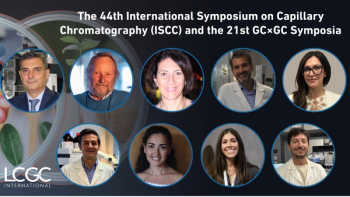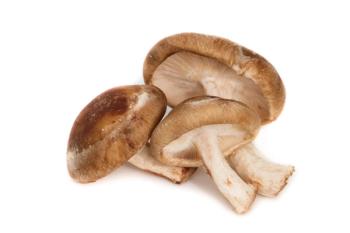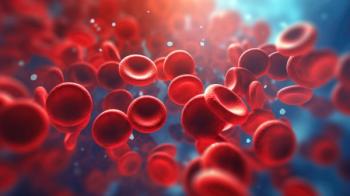
- LCGC Europe-02-01-2019
- Volume 32
- Issue 2
The Essential Guide to Optimizing Sensitivity in GC–FID Analysis
Tips to improve signal-to-noise ratio when using standard gas chromatography (GC) equipment.
Tips to improve signal-to-noise ratio when using standard gas chromatography (GC) equipment
It is often possible to achieve better sensitivity and lower limits of detection and quantitation using standard gas chromatography (GC) equipment, such as a standard split–splitless injection port and a flame ionization detector (FID). Paying attention to some of the fundamental variables can lead to much improved method performance, and here we consider some important aspects necessary to optimize GC–FID performance.
Sample Solvent: By choosing a sample solvent that matches as closely as possible the stationary phase polarity, the peak shape will be optimized with no tailing or broadening, which might otherwise reduce the signal-to-noise ratio. Here we think of choosing nonpolar solvents such as n-hexane with nonpolar stationary phase such as 1% polydimethyl siloxane (DB1, RTX-1), or methanol with polar stationary phases such as waxes.
High Head-Pressure (Pressure Pulsed) Injection: The inlet liner is designed to hold a certain volume of gas (typically 500 to 950 mL), and we need to avoid overfilling the liner with sample gas, or problems will occur with poor quantitative reproducibility and carryover. By choosing a sample solvent with a lower expansion coefficient, and increasing the pressure within the liner during the injection, in order to constrain the volume of sample gas created, larger injection volumes can be made. Calculators, typically known as backflash or vapour volume calculators, can be used to determine the maximum sample volume that can be injected before liner overfilling occurs.
Optimize Splitless Time: In splitless injection mode, the split vent valve is closed and all of the contents of the inlet are directed into the GC column. After a predetermined length of time (the splitless time), the split vent value is opened, and the remaining inlet contents are vented to the atmosphere. This helps to prevent wide and badly tailing solvent peaks, increased baseline noise, and a rising baseline during the analysis. If the split vent is opened too early, there is a risk of analyte loss, and, if opened too early, the broad and tailing solvent peak may reduce the sensitivity of early eluting analytes; and noisier baselines will reduce the signal-to-noise ratio for all analytes. One must experimentally determine the optimum splitless time in order to achieve the best reproducibility and sensitivity from the splitless injection. In order for proper solvent focusing to occur, the initial oven temperature must be maintained at around 20 °C below the boiling point of the sample solvent during the injection phase of the analysis.
Initial Oven Temperature Hold: On column sample focusing during splitless injection takes a finite amount of time, and, during this time, the oven temperature must be held constant. However, if this initial hold time is too long, some degree of analyte dispersion may occur, reducing the peak efficiency, and, hence, the signal-toânoise ratio. The initial hold time should be carefully evaluated if optimum sensitivity is to be achieved.
GC Column Choice: Shorter columns (10–15 m) with narrow internal diameters (i.d.) (0.18–0.25 mm) and thin films (< 0.3 mm) will give the best peak efficiencies, and therefore the optimum signal-to-noise ratio. Further, less polar stationary phase chemistries will show less inherent bleed, again improving the signal-to-noise ratio, although the choice of stationary phase chemistry will be sample dependant. One should chose the least polar column with the thinnest film, which results in a satisfactory separation, in order to reduce column bleed to the minimum amount possible.
Carrier Gas Operating Mode: Ensure that the carrier gas operating mode is set to constant flow, as opposed to constant pressure, to ensure that the carrier flows at the same linear velocity during the whole temperature program. This will avoid the carrier slowing as the temperature increases, which can lead to broadening of later eluting peaks, and suboptimal detector response.
FID Optimization: Optimize the fuel (hydrogen) to oxidizer (air) ratio of the FID to ensure the best response for your analytes (typically start with a 10:1 ratio and adjust the fuel gas in steps of +/- 5 mL/min). Also, ensure that the make-up gas flow rate (nitrogen is recommended as the most effective make-up gas by many manufacturers) is optimized, and note that the make-up gas flow rate can have a pronounced effect on analyte sensitivity. Start with a 1:1 ratio of make-up gas to fuel gas (typically hydrogen), and adjust in +/- 5 mL/min steps to investigate the optimum range.
Thermal Gradients: Ballistic (short and fast) thermal gradients will produce the sharpest peaks and the best signalâtoânoise ratios, but ensure the oven heater motor can follow the required temperature profile in a reproducible way. Of course, the use of ballistic thermal gradients will depend upon the separation requirements and the complexity of the sample.
Get the full tutorial at
Articles in this issue
almost 7 years ago
Vol 32 No 02 LCGC Europe February 2019 Regular Issue PDFalmost 7 years ago
Going Green in Pharmaceutical Analysisalmost 7 years ago
GC×GC: From Research to RoutineNewsletter
Join the global community of analytical scientists who trust LCGC for insights on the latest techniques, trends, and expert solutions in chromatography.




